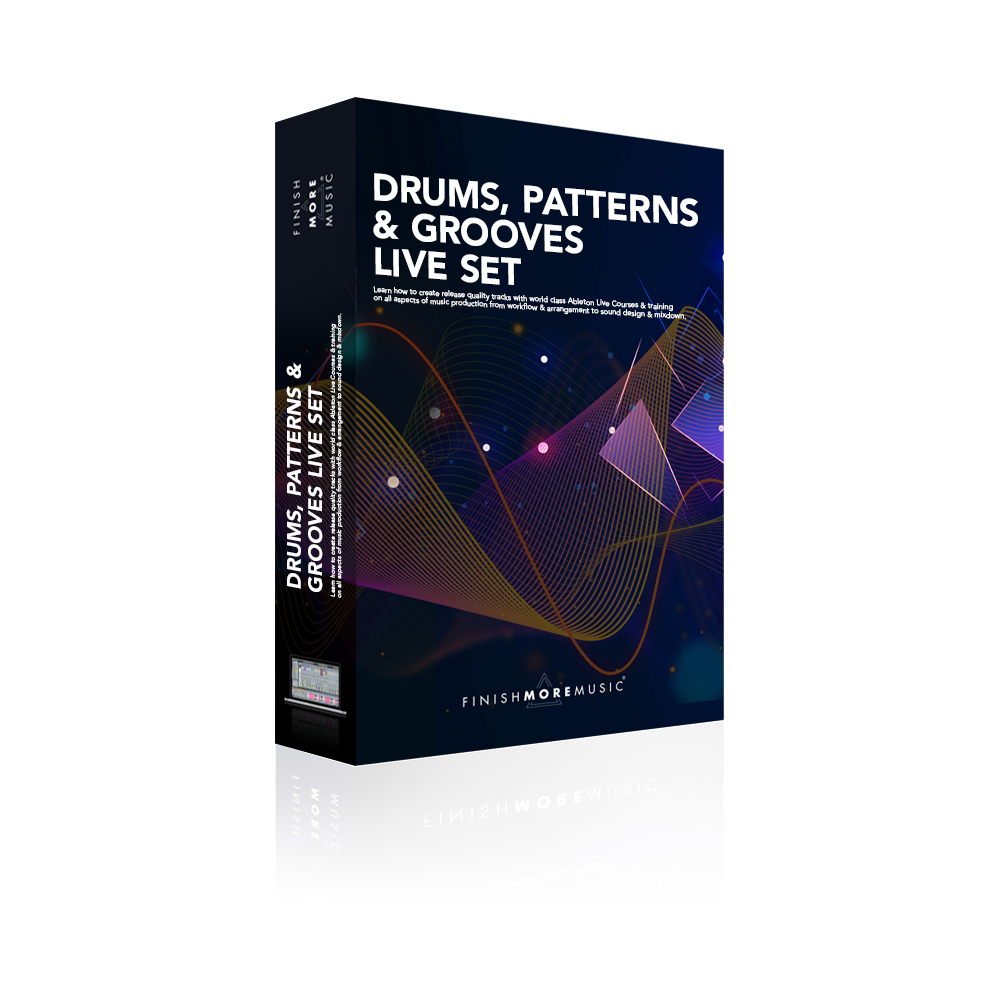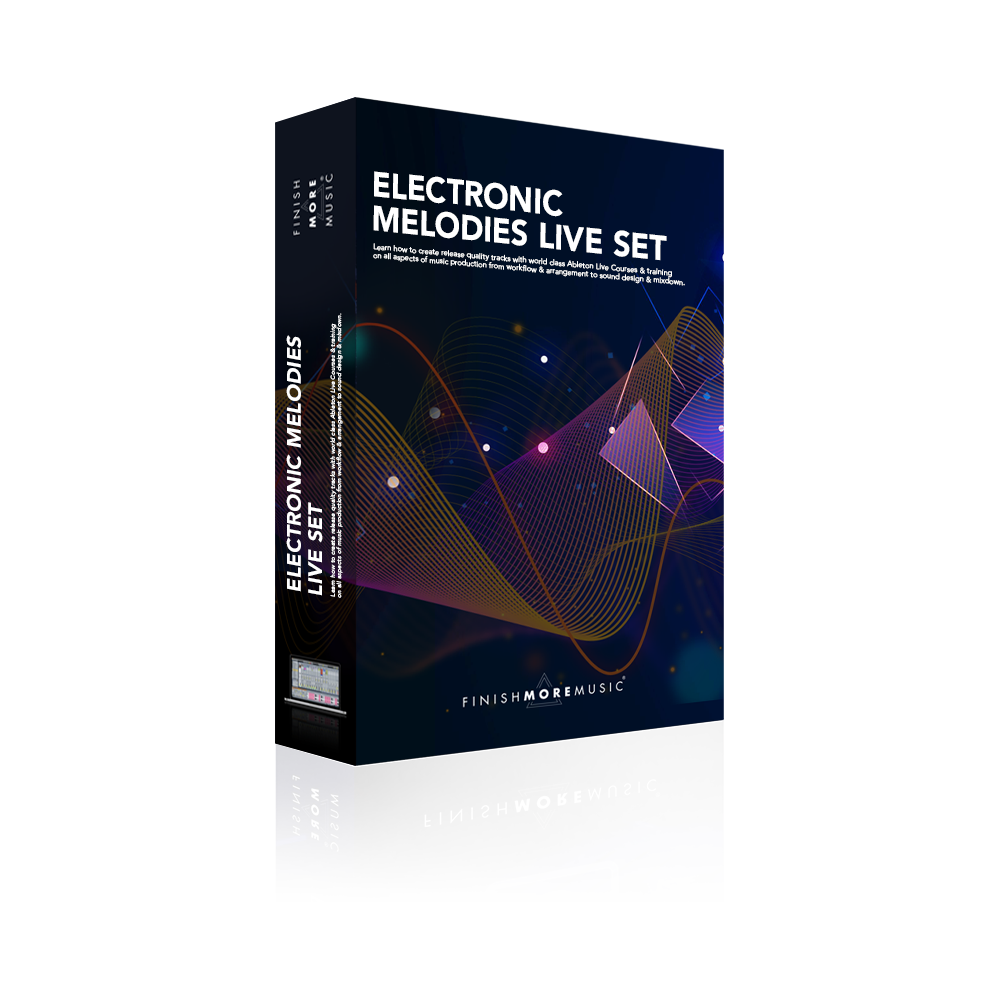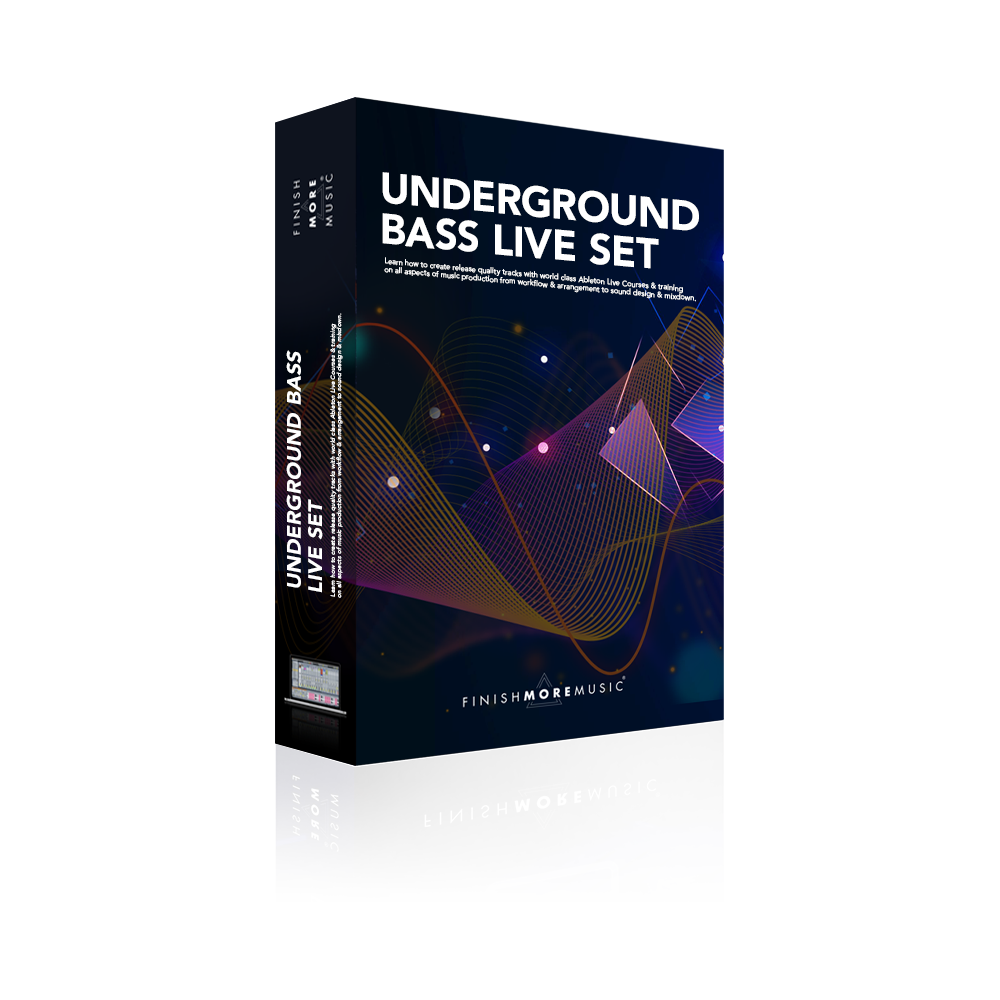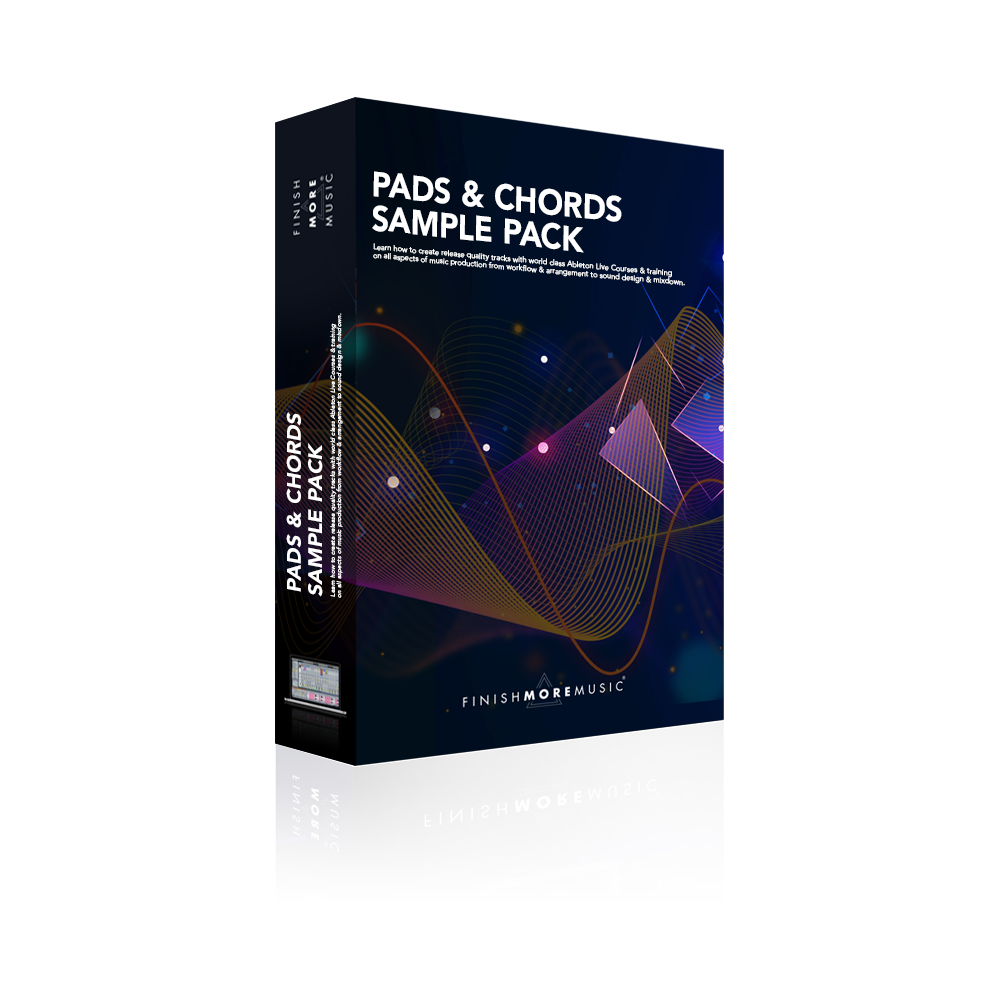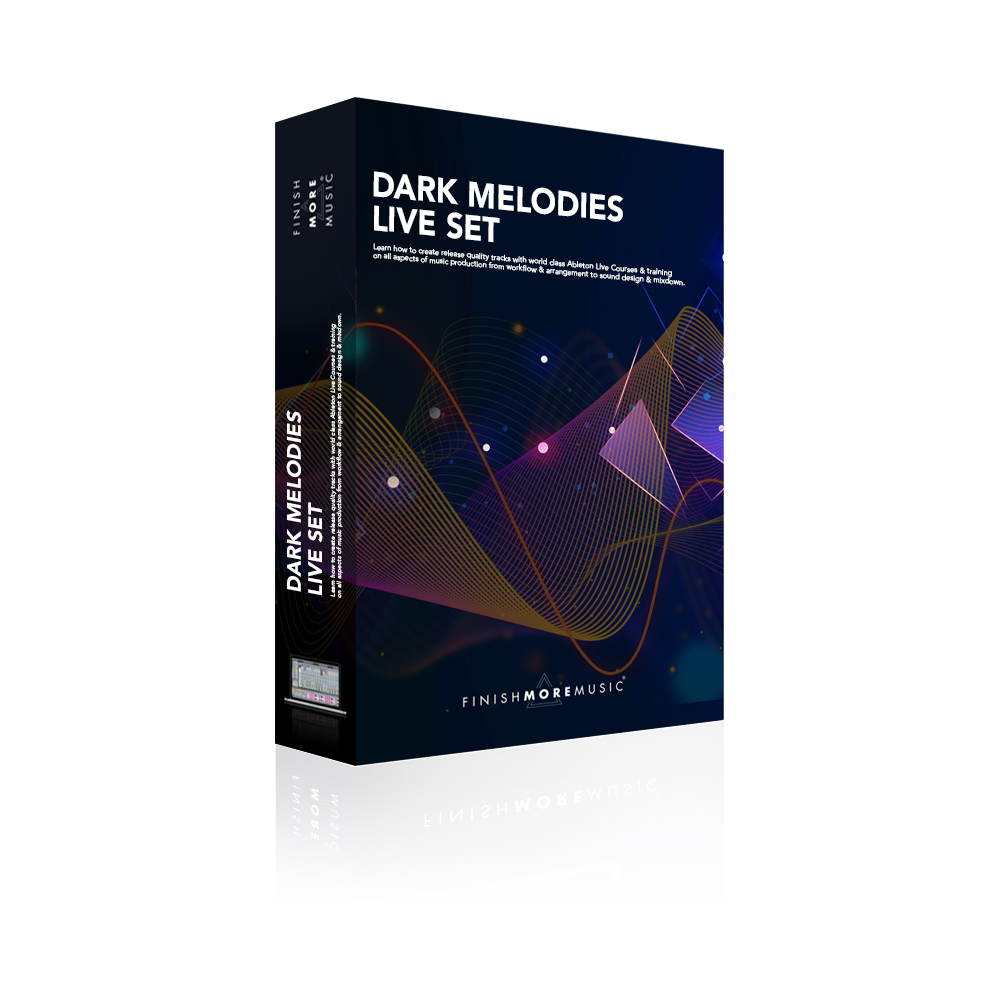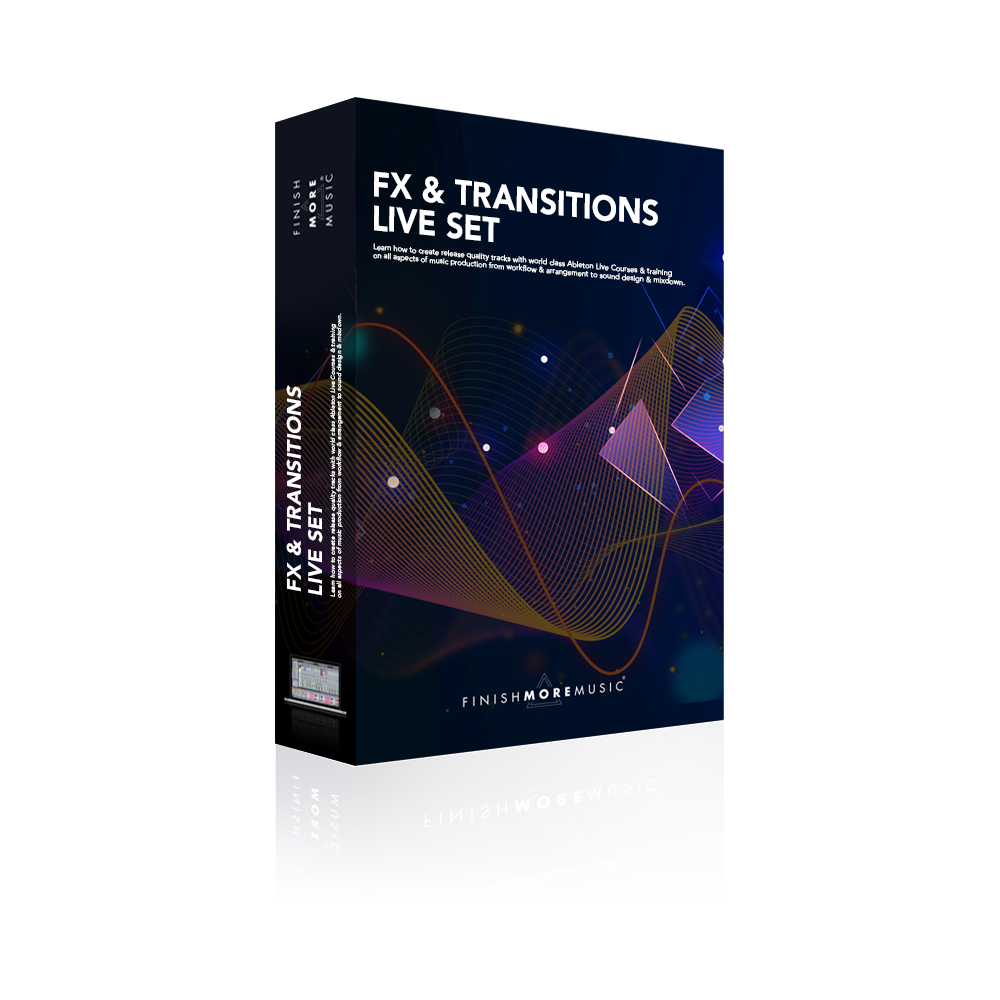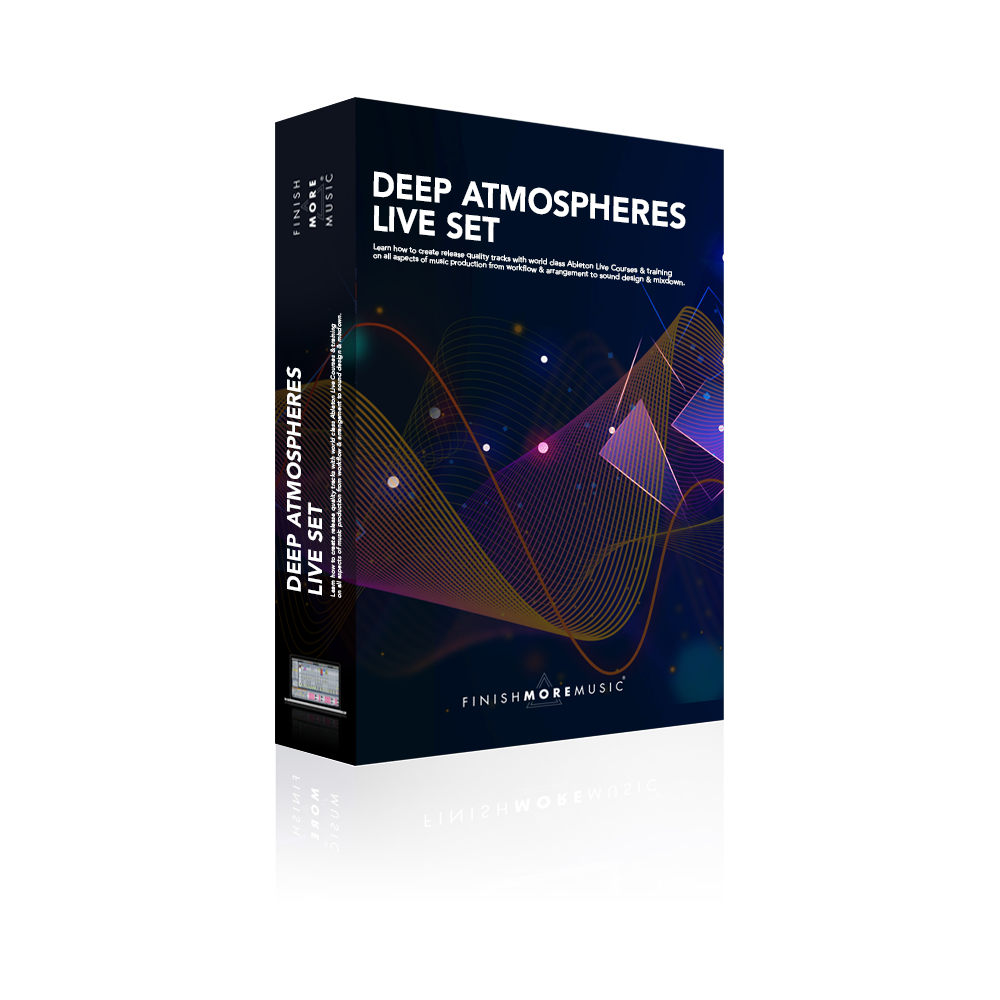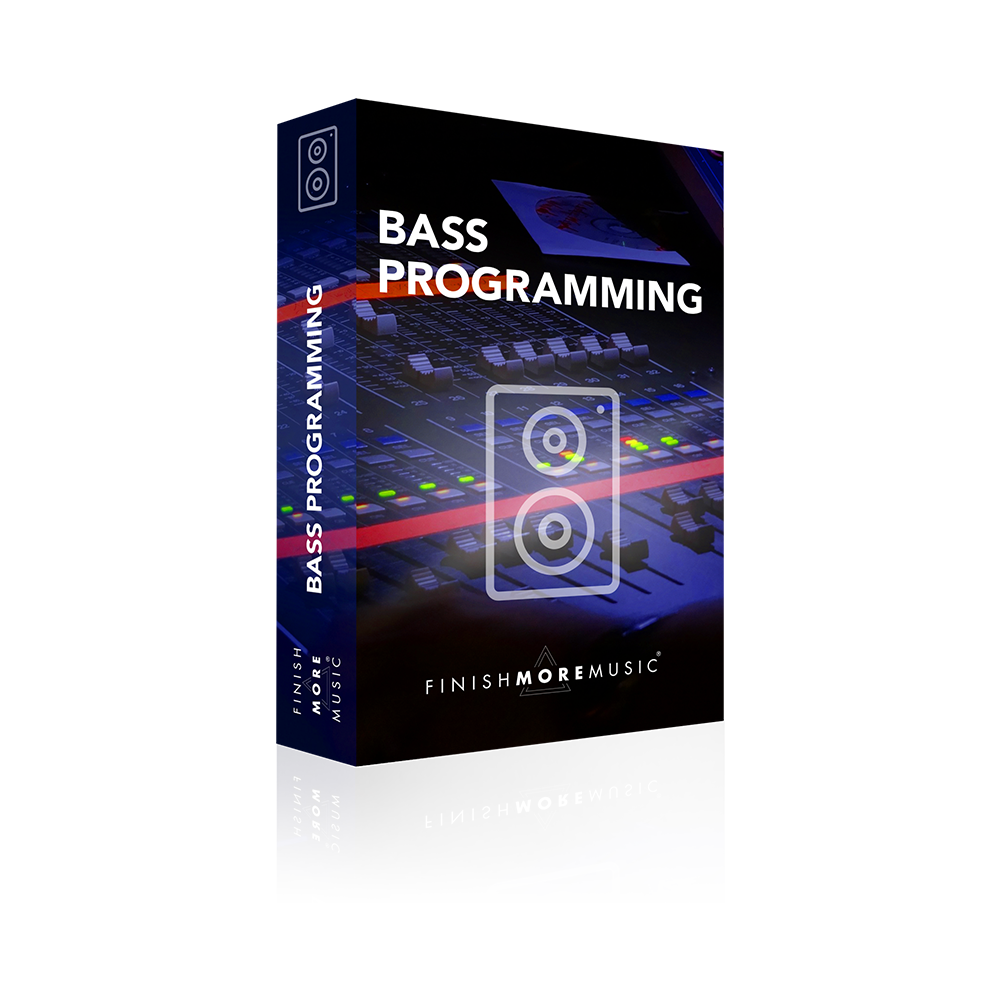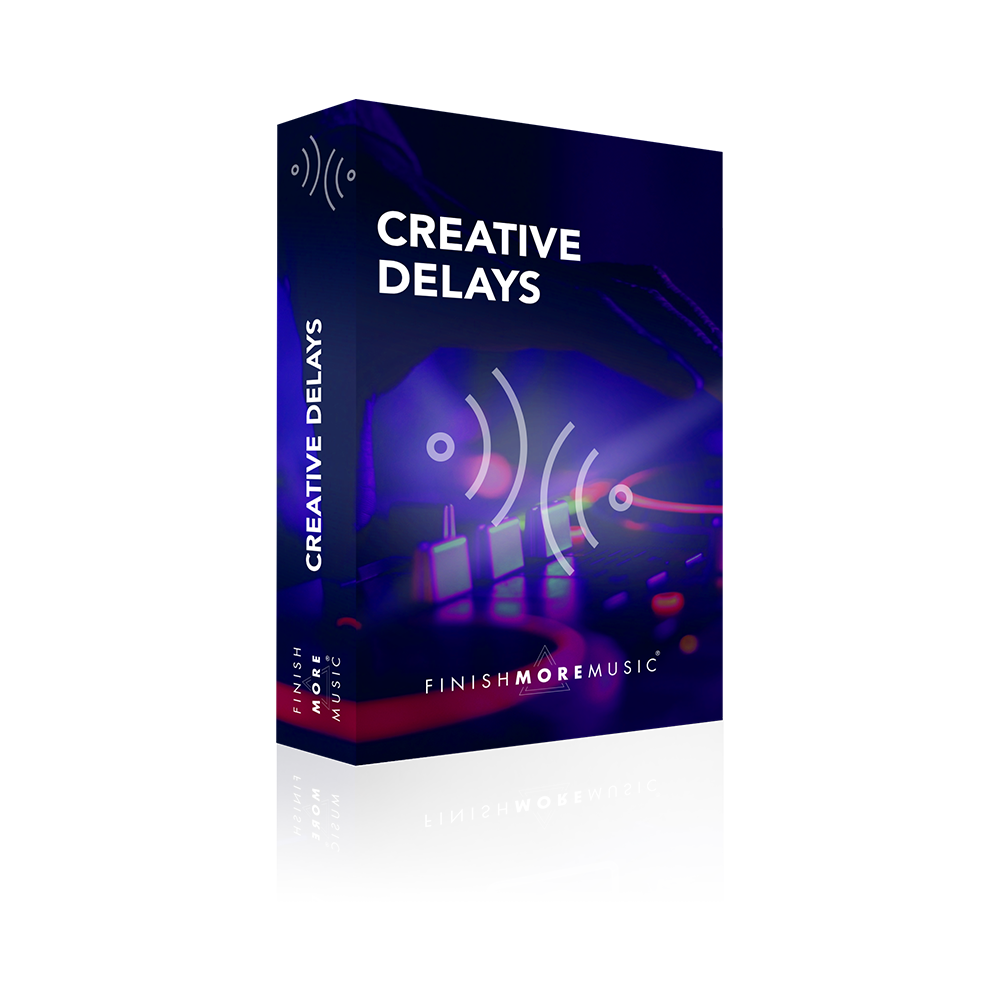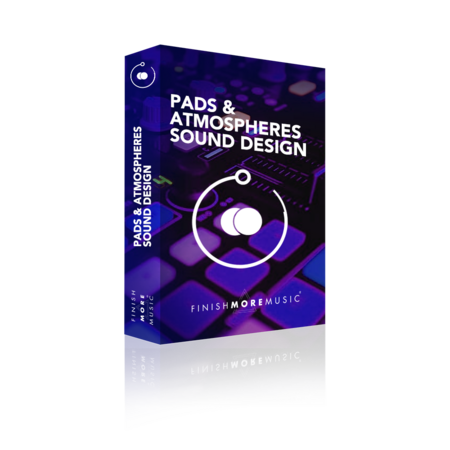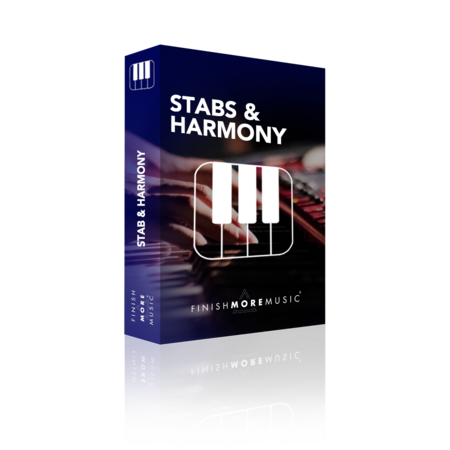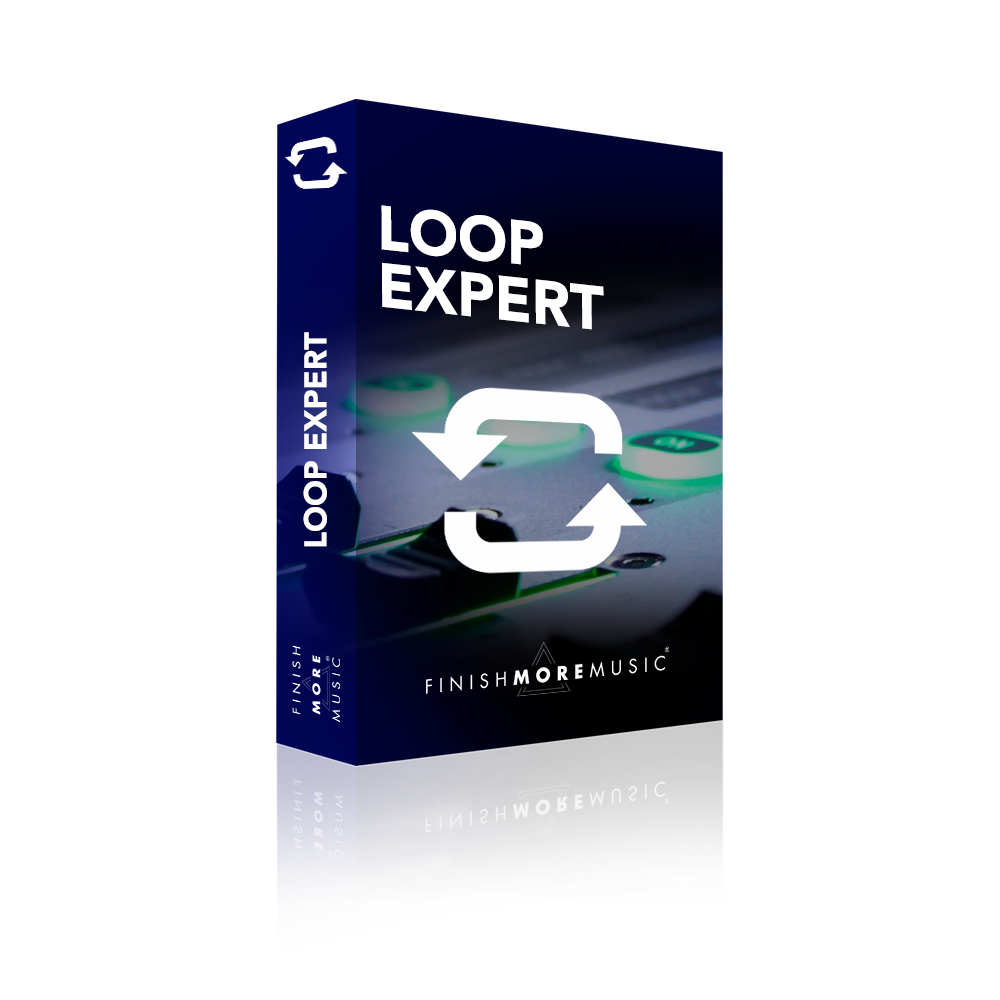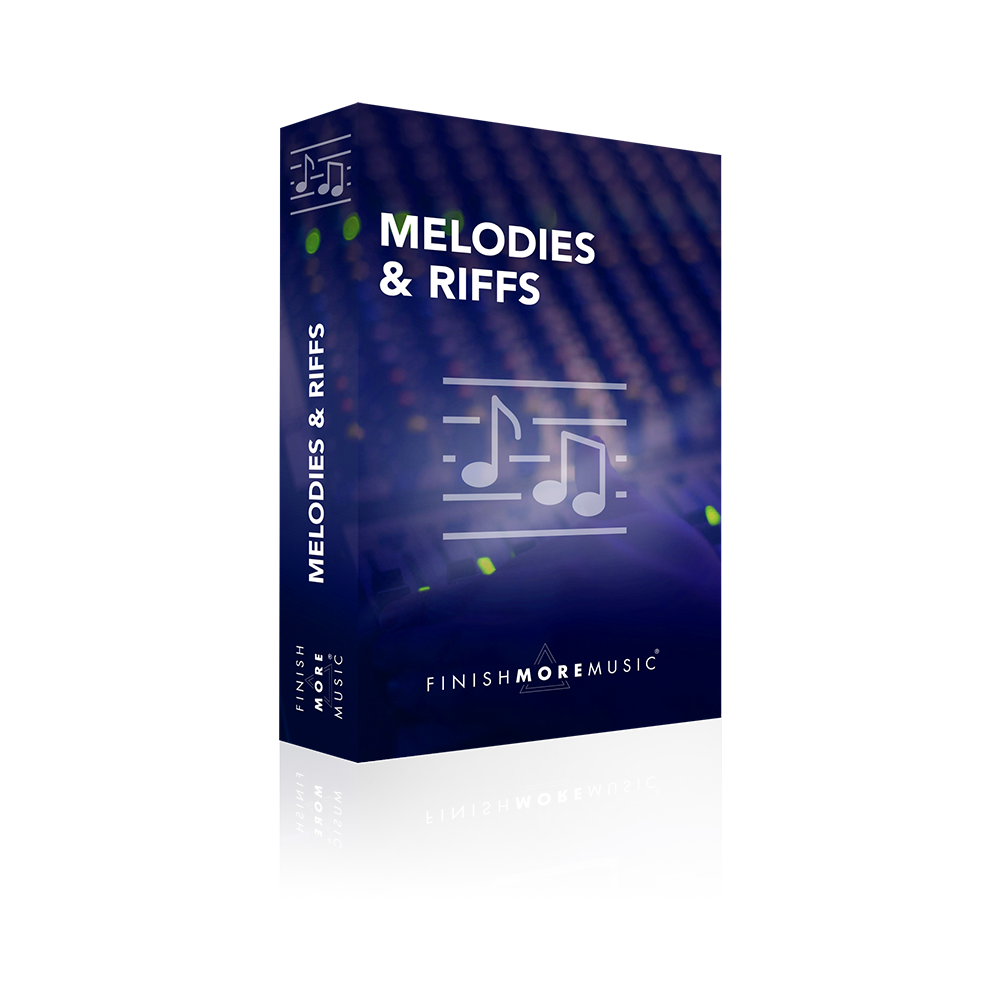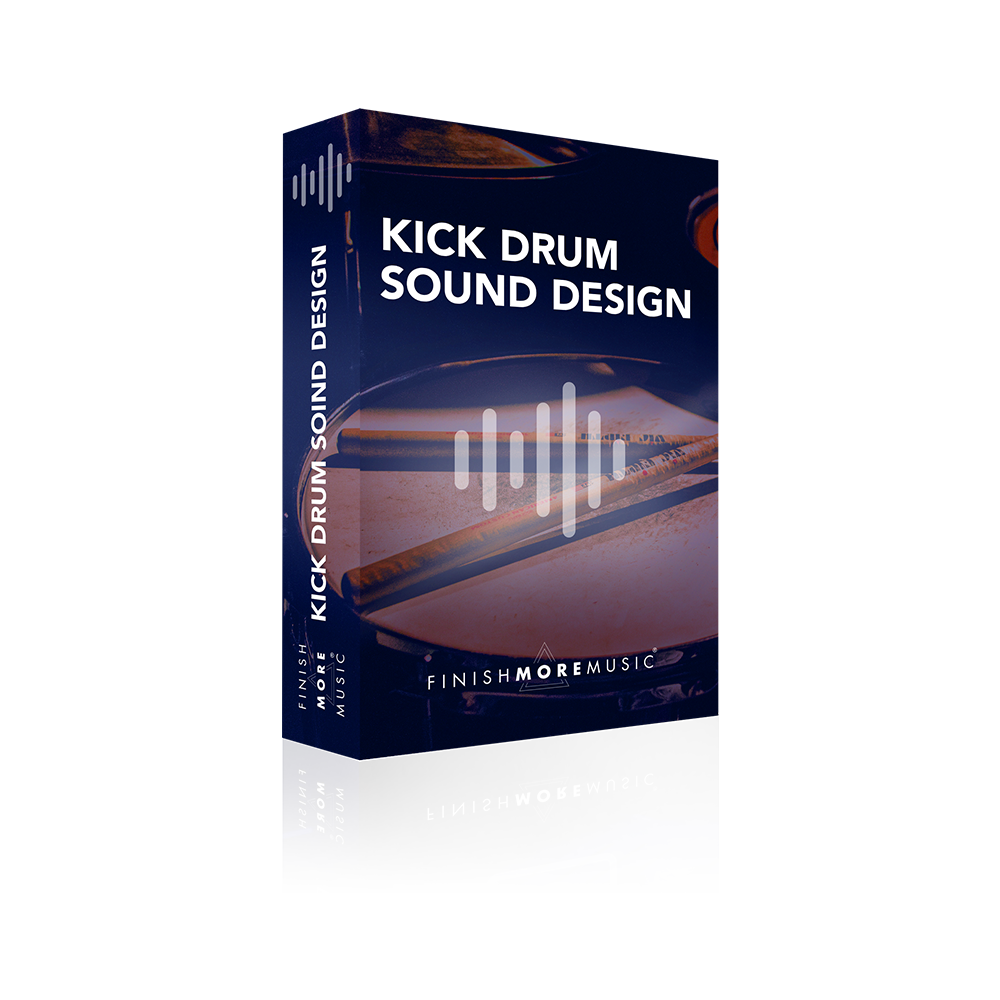I have lost count of the amount of times I have been asked how to create that low end bass rumble sound that is synonymous with huge Techno tracks. There are a million different techniques available on the interwebs. Some simple, some overly complicated. In this tutorial, I show you a quick way to create that low end energy. Plus I show you how to design an Ableton rack that you can drop in any new project and get that rumble rumbling in your music!
Transcript
Okay so in this tutorial we’re gonna have a look at a really cool techno low-end rack. It’s basically a kick shaper and a rumble bass all in one and it’s super easy for you to build. So I’m gonna walk you through it. Now before I get into the backstory of this project and where the rack came from have a listen to this track and get a feel for where we’re heading.
So lovely piece of techno. So this is a track called Working and is by four members from my Finished More Music community Frank, Guillaume, Oliver and Armin. Now where this actually comes from is the inside of the community we do collaborations. So loads of members in the community come together. It’s something that we systematize, make it easy for everybody and to cut to the chase for you, you get four members creating four tracks in four weeks. Say learning from each other, building great bonds and all of these things really powerful thing to do collaborating. And then at the end of it we take all of the tracks so they could be like a hundred of them. And we get all of the project files which is basically what you’re seeing in front of you here and we put it in an archive so that all of the members can download, dissect, learn, grab the presets whatever it might be. And so this is one of those tracks.
Now I was having a little listen through seeing what was in there myself. And I thought I really liked the low end on this. So let’s see what they’re up to. And so I’m gonna walk you through it. I think it’s really cool. So I’m just gonna solo literally what’s creating this low end. And you’ve basically got one kick sound. And where the magic is happening is that it’s going through this audio effects rack that consists of three different chains. So it’s only one sound that’s doing all of this. Now one track one chain is the dry signal. So it’s just a kick on its own it sounds like this. Then it you’ve got this next layer which is the tops. So you’ve got an EQ taking out the third and the low-end sound bass and then this drum buss. So if I take the drum buss off. And you can see it’s got drive, it’s got the hard setting on here, we’ve got crunch going on, bringing up the transients and the body. All sorts of good stuff is going on.
But you could, you know really mess with these settings. It’s super super flexible. So let’s hear the two of them together. I’ll do the dry and then this top signal so you can really hear how that would cut through the mix. And then the bass is also coming from here. So this is the
bass sound. So it’s that deep techno rumble. And if I just go to the end of this, there’s some pretty obvious stuff going on. So we’ve got a filter taking out all the tops. So we’ve just got the suby, bassy part of the sound, a utility keeping everything in mono. And then we got a reverb let’s take that off and some saturation.
So here’s the delay, simple 1/16 delay with some feedback. But listen what happens when we add the saturation in. So this is really heavily driven. And straightaway we get that cavernous sound. Now you can experiment with the different curves. And of course imagine you could put any distortion in here you want you could have all sort of different tube emulations all sorts of saturators, over-drive’s. Experiment with everything because remember we’re taking all the high end grit and those frequencies out ater on down the chain. And then the reverb just ties all this together. And so what we get is three layers and we can blend these in any way we want.
So I can really take that down it feels a lot more coherent. But obviously that tops was bought up when they had it in the mix and they realized they wanted it to punch more through the track. So it’s actually a really simple rack and imagine you can put any kick drum you want into this. You know that your base and your kick gonna go because it’s all made from the same source material. You can make easy edits and tweaks to this. And of course this rack is mega customizable everything from swapping out your plugins to tweaking the native live devices that are in here. It’s gonna get you a wide variety of flavors and Tambor’s. So I thought it was a really cool rack. I mean this sounds absolutely banging this low end when the tune is kicking off. And I wanted to share that with you. I hope you found it useful something that’s really easy to build, very easy for you to customize and very quick to get results. So as always if you’ve got any tips if you’ve got anything that you can share extra things you can add under the video that will help other people out, that we can explore with here at fmm, we’d love to hear what you’re up to. Please do share it in the comments underneath the video. Until next time. Happy music making.
One of the areas I know a lot of producers struggle with is building tension in their breakdowns. That feeling of war excitement that you want on the dance floor as everyone gets ready for the track to drop and the place is gonna go right off.
Thank you for watching
I really appreciate you tuning in and I hope you’re enjoying the tutorials and taking some real value into your music sessions.
If this video resonated with you and you feel it will have a positive impact on the people you know, please share it by using the social media buttons you see at the bottom of this page.
To make sure you are always the first to know when a new video lands: Subscribe to the FMM Youtube channel here.
Let me know how you get on with the techniques I showed in the videos and if you have any suggestions for future tutorials, ping me a message on Instagram (@IamKeithMills)

